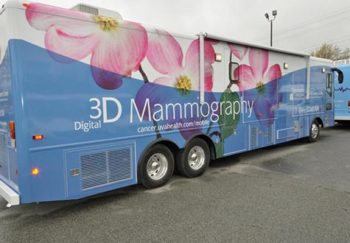
In the U.S., Paget’s disease of the breast affects less than 5 percent of all people diagnosed with breast cancer, according to Breastcancer.org. While this type of cancer is rare, it’s also a red flag for ductal carcinoma in situ (DCIS) or other forms of invasive breast cancer. That’s why it’s extremely important to recognize the symptoms of this disease so treatment can begin promptly.
But recognizing symptoms can be difficult because many of the signs of this disease resemble those of other medical conditions. Keeping a close eye on your health helps you recognize changes to your breasts early — that way, any problems can be identified and treated as soon as possible. If you’re concerned about changes to your breasts or other symptoms you may have, talking with your doctor is the best way to determine whether there’s cause for concern.
What Is Paget’s Disease of the Breast?
Paget’s disease of the breast, also called mammary Paget’s disease and Paget’s disease of the nipple, is a rare form of breast cancer that involves the nipple and the darker skin surrounding it, called the areola. In most cases, mammary Paget’s disease only affects one nipple. It first affects the ducts of the nipple that move milk out of the breast. As the disease progresses, it spreads to the surface of the nipple and then to the areola.
It’s unclear what causes this form of cancer to develop. Some research suggests that cancer cells may first grow inside the milk ducts, then spread outward to the nipple surface. It’s also thought that the cells making up the nipple itself become cancerous.
Who Gets This Type of Cancer?
This form of cancer affects both men and women, but most cases occur in women. In most cases, a diagnosis is made after age 50.
What Are the Symptoms?
Paget’s disease of the nipple causes symptoms that resemble those caused by other medical conditions. In many cases, this rare form of cancer initially looks like certain skin diseases, such as eczema and dermatitis. According to the National Cancer Institute, you should watch out for skin changes around your nipple and areola, including:
- Flaking, thickened or crusty skin around the nipple
- Redness, itching or tingling around the nipple or areola
- Pain or sensitivity around the nipple or areola
- Nipple discharge that may be yellow-colored or bloody
- One flattened nipple
Unfortunately, because mammary Paget’s disease resembles other skin conditions, it may be misdiagnosed initially. If you have symptoms of this disease, meeting with a breast cancer specialist can help rule out other conditions in a more timely manner.
How Is Mammary Paget’s Disease Diagnosed?
Your doctor diagnoses this condition by performing a physical examination and taking a tissue sample from your nipple or areola. In most cases, your doctor uses a technique called a biopsy to take a small sample of tissue for examination. However, your doctor may remove the entire nipple for examination by a pathologist. The pathologist inspects any tissue samples collected under a microscope, looking for signs of mammary Paget’s disease.
You doctor may order additional tests, like a mammogram, ultrasound or breast magnetic resonance imaging (MRI) scan to confirm your diagnosis.
How Is Paget’s Disease of the Breast Treated?
The National Cancer Institute reports that the mainstay of treatment for mammary Paget’s disease is surgery. Depending on the stage of the disease, and whether or not you have any underlying breast cancer like DCIS, your treatment may involve:
- Mastectomy to remove the entire breast.
- Breast-conserving surgery, which removes the affected nipple and areola and a small area of healthy tissue around them. This type of surgery is followed by treatment with whole-breast radiation therapy.
Your exact treatment plan will depend on your overall health, whether you have any underlying breast cancer and your personal goals for treatment.
If you’re concerned about any nipple or areola changes, the breast care team at UVA Cancer Center can help, offering advanced diagnostic and screening options.
Even though mammary Paget’s disease is rare, it’s still important to be aware of any nipple or areola changes to help prevent complications from occurring. If you notice any changes or symptoms, your doctor can help determine whether there is cause for concern.

